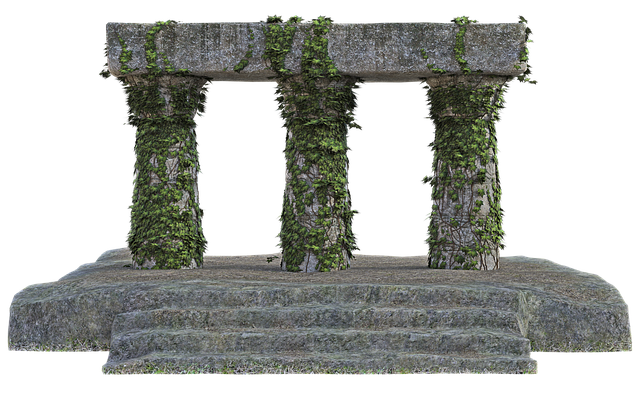Photorealistic renderings of electrical wiring diagrams have transformed engineering communication and design precision. Advanced 3D modeling software, combined with realistic material properties, allows engineers to create accurate simulations that closely resemble real-world installations. This enhances understanding for stakeholders, aids training, facilitates collaboration, and enables early issue identification, reducing costly errors. Tools like AutoCAD Electrical and rendering software such as Lumion or V-Ray are crucial in this process, producing stunningly accurate and visually appealing electrical wiring diagram renderings through sophisticated techniques including textures, material simulations, and lighting effects with GPU acceleration.
In today’s digital age, photorealistic renderings of electrical layouts and wiring systems have become indispensable tools in electrical engineering. These highly detailed visual representations not only aid in design but also facilitate clear communication among stakeholders. This article explores the transformative power of photorealistic renderings, delving into their applications, creation process, benefits, and the cutting-edge software and techniques driving their quality and accuracy. Discover how these advanced tools are revolutionizing electrical wiring diagram renderings.
Understanding Photorealistic Renderings and Their Applications in Electrical Engineering
Photorealistic renderings have transformed how we visualize and communicate complex electrical systems, especially in the realm of electrical wiring diagrams. These highly detailed visual representations bring abstract concepts to life by generating images that closely resemble reality. Through advanced 3D modeling software and realistic material properties, engineers can now create accurate simulations of electrical layouts and wiring systems.
Such renderings offer numerous applications in electrical engineering. They facilitate better design reviews, allowing stakeholders to grasp intricate wiring configurations easily. This is particularly beneficial for large-scale projects where conveying precise information is critical. Moreover, photorealistic diagrams aid in training and educational purposes, enabling students to study detailed simulations of real-world electrical setups.
The Process of Creating Realistic Visual Representations of Wiring Systems
The process of creating photorealistic renderings for electrical layouts and wiring systems involves several intricate steps, combining artistic skill with technical expertise. It starts with understanding the complex network of components in an electrical diagram, including wires, switches, and connectors. This knowledge is crucial to translate the abstract data into a visually accurate representation.
Specialized software plays a pivotal role, allowing designers to interpret the wiring diagram and craft a three-dimensional model. Through advanced algorithms and realistic material simulations, these tools enable the creation of photorealistic images that closely mimic actual electrical installations. This level of realism is essential for effective communication, helping stakeholders visualize intricate systems, identify potential issues, and make informed decisions.
Benefits of Using Photorealistic Diagrams for Design and Communication
Photorealistic renderings of electrical layouts and wiring systems offer a significant leap forward in terms of design precision and communication effectiveness. Unlike traditional 2D diagrams, these highly detailed visual representations bring complex electrical structures to life, providing stakeholders with a clear, three-dimensional understanding of the intended design. This level of realism is particularly beneficial for engineering teams, as it allows for early identification and resolution of potential issues, reducing the likelihood of costly errors during implementation.
Moreover, photorealistic diagrams enhance collaboration by serving as a universally accessible visual language. Whether presenting to clients, discussing with colleagues, or documenting for future reference, these renderings convey intricate electrical information in a digestible format. This promotes better decision-making, facilitates knowledge transfer, and ultimately streamlines the design-build process, making photorealistic wiring diagram rendering an indispensable tool in modern electrical engineering practices.
Tools, Software, and Techniques for Achieving High-Quality Electrical Wiring Diagram Renderings
Creating photorealistic renderings of electrical layouts and wiring systems demands a combination of specialized tools, powerful software, and advanced techniques. Engineers and designers often rely on 3D modeling software like AutoCAD Electrical, which provides precise tools for creating detailed diagrams. Once the diagram is finalized, rendering software such as Lumion or V-Ray steps in to bring it to life with realistic visuals, ensuring every component appears accurate and aesthetically pleasing.
To achieve high-quality renderings, professionals employ techniques like adding textures and materials that mimic real-world electrical components. They also utilize lighting simulations to capture the exact shadows and reflections of wires and connectors. Additionally, optimizing rendering settings and leveraging GPU acceleration can significantly enhance rendering speed without compromising on visual fidelity. These methods collectively contribute to producing stunning and accurate photorealistic renderings of electrical wiring diagrams.
Photorealistic renderings of electrical wiring diagrams offer a game-changing approach in the field of electrical engineering. By providing visually stunning and highly accurate representations, these renderings enhance design precision and communication. The benefits are clear: improved project planning, easier collaboration, and reduced errors. With advanced tools and software now readily available, achieving exceptional quality in electrical wiring diagram renderings is more accessible than ever, revolutionizing the way we visualize and communicate complex electrical systems.
